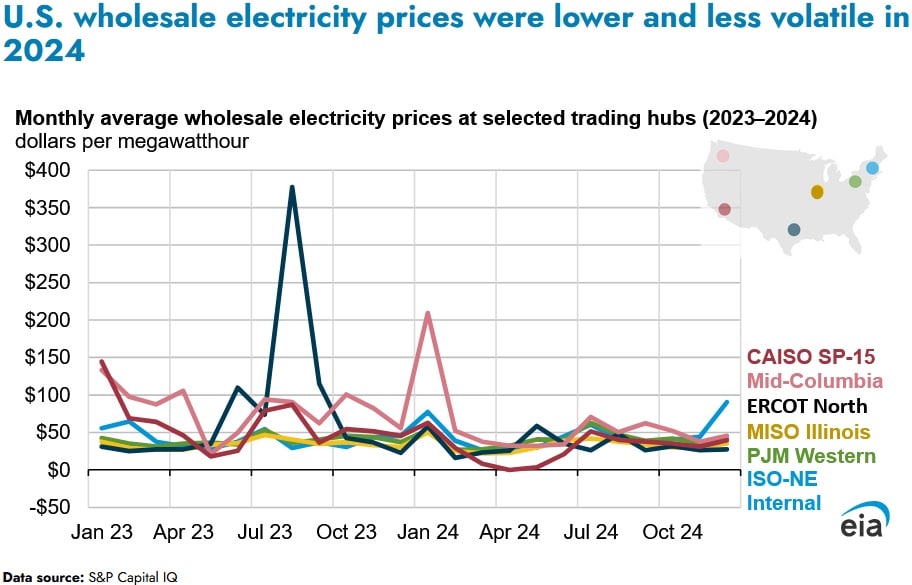U.S. Wholesale Electricity Prices Were Lower and More Stable Last Year: EIA

Average U.S. wholesale electricity prices were lower and less volatile during 2024 compared to 2023 due largely to reduced natural gas prices, increased renewable generation, and expanded battery storage capacity according to a Jan. 16 report published by the U.S. Energy Information Administration.
U.S. electricity prices were highest during January, in line with below seasonal normal temperatures increasing demand for natural gas and prices, which in turn led to higher prices for natural gas fired electricity. Thereafter, U.S. natural gas prices traded significantly lower than average for the remainder of the year.
The U.S. benchmark Henry Hub natural gas spot price averaged $2.21 per million British thermal units (MMBtu) during 2024, the lowest yearly average price on record. The downward price trend evident in the U.S. natural gas spot price can be attributed to robust natural gas supply fundamentals and constraints in demand for the majority of 2024. January 2024 was an exception, with spot prices hitting a yearly high of $13.49/MMBtu due to a cold snap increasing gas demand for household heating. Firm robust U.S. natural gas production and milder temperatures during February and March led to a downward trend thereafter. The bearish sentiment evident in the U.S. natural gas market was underpinned by relatively full storage levels. Natural gas price changes have a significant impact on wholesale electricity prices because natural gas prices tend to set the marginal price of electricity during most hours across the majority of the regional markets.
Natural gas-fired generation increased during 2024 in the majority of the regions across the U.S., with the exception of California and the Southwest region where it was replaced by solar energy. Coal-fired generation declined in the majority of the regions, particularly in the Northwest and Midwest. U.S. solar generation rose, in line with growth in capacity and above-average solar radiation. Wind generation also increased due to higher capacity during 2024.Meanwhile, U.S. hydro production declined marginally during 2024.
EnerKnol Pulses like this one are powered by the EnerKnol Platform—the first comprehensive database for real-time energy policy tracking. Sign up for a free trial below for access to key regulatory data and deep industry insights across the energy spectrum.
ACCESS FREE TRIAL